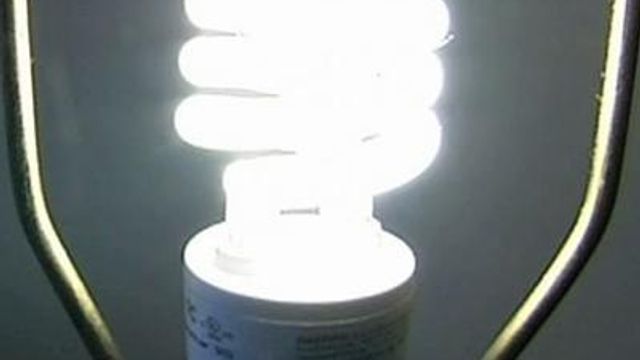CFLs save money, but require caution for disposal
The presence of mercury in compact-fluorescent light bulbs creates some safety concerns that consumers should be aware of before they make the switch.
Posted — UpdatedCompact-fluorescent light bulbs are great energy-savers, but there are some safety issues that consumers should consider, too.
Changing just five often-used regular bulbs to CFLs can save about $25 a year on your electric bill. Benefits like those have helped double the sales of CFLs in the past year.
However, CFLs contain small amounts of mercury, so they can't be thrown away like regular light bulbs. They also require some extra caution if they break.
"Used appropriately, CFLs are a great way to save money and energy," Consumer Reports tester Jim Nanni said. But, he warned, "There are some important safety guidelines that consumers should follow in their use."
Nanni was recording video of a CFL when it died – and it looks a bit scary, with the base glowing and looking hot.
"This bulb was flashing and making loud noises. From a distance or behind a shade, it might appear like the bulb was on fire," Nanni said. "But that wasn't the case. It was the bulb coming to the end of its life."
CFLs are not a fire hazard, according to Underwriters Laboratories, which investigates electrical products for safety. However, when a CFL does burn out, you need to be careful how you handle it.
"Turn off the power to the bulb. Let it cool, and then remove it by grasping from the base and not the glass part of the bulb," Nanni said.
Manufacturers say they are making circuitry changes to keep CFLs from smoking or flashing when they burn out.
"Another concern consumers have is what to do with a broken CFL," Nanni said. "They should follow the guidelines of the (U.S.) Environmental Protection Agency, because CFLs do contain mercury."
On hard floors, do not use a vacuum or broom to clean up the broken bulb. Instead, the EPA recommends wearing disposable rubber gloves and scooping up pieces with stiff paper or cardboard. Next, wipe the area clean with damp paper towels.
On a rug, a broken bulb requires even more care. Use sticky tape to pick up the broken pieces and powder. Then, put all the pieces and cleaning materials in two sealed plastic bags, one inside of the other.
• Credits
Copyright 2024 by Capitol Broadcasting Company. All rights reserved. This material may not be published, broadcast, rewritten or redistributed.





